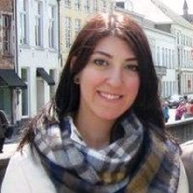Ellipsometry based imaging techniques for nanoscale characterization of heterogeneous polymer films
Promotion date: September 26.
Promotor: Prof. dr. Julius Vancso
| Hybrid methods for nanoscale characterization of heterogeneous thin polymer films were discussed. Essentially two ellipsometry based hybrid methods were established or further developed, respectively: electrochemical imaging ellipsometry (EC-IE) and scanning near field ellipsometry microscopy (SNEM). Ellipsometry was combined with electrochemical methods for the visualization of redox driven dynamic changes in thin polymer films. In particular, the redox responsive behavior of an oligoethylene sulfide end-functionalized poly(ferrocenyldimethylsilane) (ES-PFS) film was investigated with this hybrid method against a passive (non-redoxactive) 11-mercapto-1-undecanol (MCU) layer. The thickness change of the PFS layer upon oxidation and the reduction was observed in situ in real time with EC-IE. This hybrid method provides vertical resolution at the sub nanometer scale while its lateral resolution is limited to the wavelength of the light source (λ=633 nm). In contrast, SNEM reveals lateral resolution below the diffraction limit of light. The emphasis of the thesis was devoted to SNEM, including: the introduction of the instrument, experimental case studies to enlighten its contrast formation, and the optimization of the method. SNEM enables optical contrast imaging of thin transparent polymer films at the nanoscale level, due to the combination of the spatial tip-sample positioning capability of the atomic force microscopy (AFM), together with the high sensitivity of ellipsometry. |
What was the main challenge of your PhD work?
In order to defeat the diffraction of light in microscopy, we used two hybrid characterization methods in which ellipsometry was combined with, respectively, electrochemical methods and Atomic Force Microscopy (AFM).
The first hybrid technique (imaging ellipsometry combined with electrochemical techniques) was successful already at an early stage of the project. However, we encountered problems with the sample preparation which was at the heart of the project. Microcontact printing lithography technique was used to prepare the special sample for the hybrid setup. Finally, we were able to show the swelling and collapsing behavior of redox responsive thin films. This is a reversible process, by cycling the potential. This process was captured on real time video at which the vertical resolution was in the range of 0,7 nanometer.
In the second part of the project we were able to establish, test and optimize an instrument combining AFM and ellipsometry. Here the challenge was to collect localized optical information from heterogeneous polymer thin films.
In what magazines were your results published?
The first method was published in NanoScale Journal. The AFM/ellipsometry results were published in European Polymer Journal and a paper is submitted to UltraMicroscopy. We also presented this work at the MRS (Materials Research Society) conference at Boston, USA. It was then published in the online conference proceedings.
Can you recall some special moments during your PhD period?
In the film preparations, needed for the samples, some special fabrication techniques were involved. These turned out to be more challenging than expected beforehand. First attempts using micro contact printing techniques were not successful, and were about to lead to some serious time delay in the project.
After a short holiday, one Monday morning, I tried to fabricate the layers in a completely different manner. Starting afresh this led to very nice results in the short-term. Already the next day I could come up with the layers I had been dreaming about for months.
This sums up one of the main things I have learned during this four year PhD period: define the subproblems of the project as well as you can, be patient, never give up, and try new approaches from time to time.
What are your future plans?
Now I am working at the ASML company. Metrology techniques for the semi-conductor industry, is the main part of my job. Customer support is central here. I am able to use my technical skills to understand, define and finally tackle and fix the problems the customer is facing.
These dynamic and problem solving aspects fit my personal character very well. In fulfilling the job I learned a lot already. Also ASML offers great educational and training programs, allowing one to further develop skills and to shape a career path meeting personal ambitions.
Did you feel part of the Mesa+ institute while working on your thesis project?
As a member of the Materials Science and Technology of Polymers Group, in this project a fair deal of communication took place with different groups within MESA+. This was all the more helpful while my expertise is mainly on the chemistry engineering part. Attending the meetings and using various equipment apparatus, I encountered many experienced researchers and technicians. I benefitted from their expertise which they were happy to share.
The Mesa+ Day is a fruitful event, as one can get acquainted with new people presenting work and sharing knowledge during the poster sessions, that might be of interest to your research. Subsequently, it is easy to have a follow-up, as the researchers are working literally next-door. In this way you can work out new formed ideas on short notice. This kind of meetings could be organized even more often in my view, as modern science is not a one man show.

